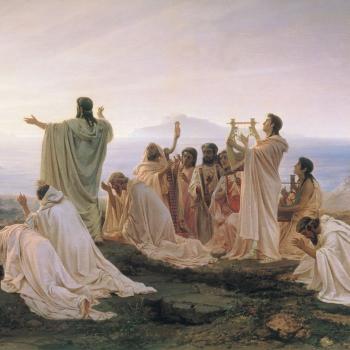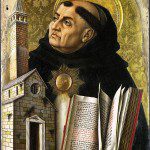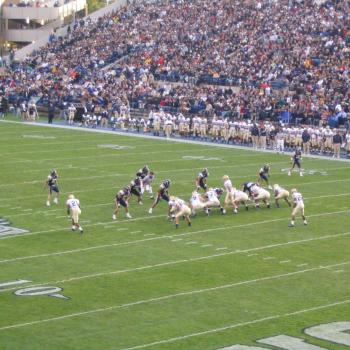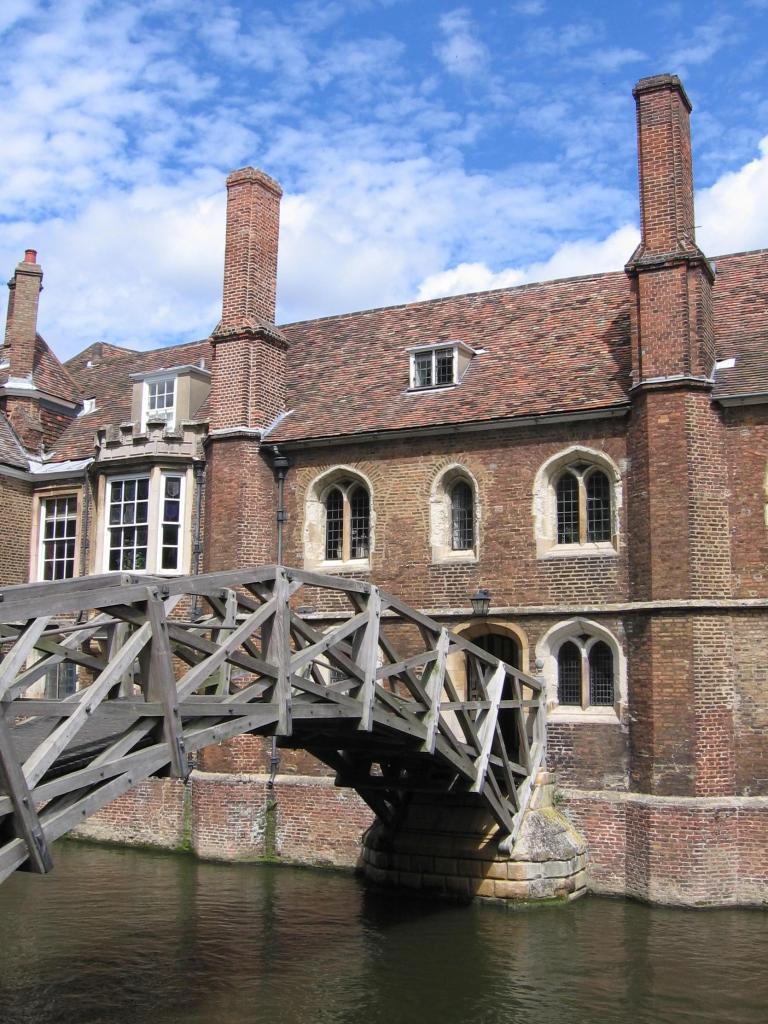
(Wikimedia Commons public domain image)
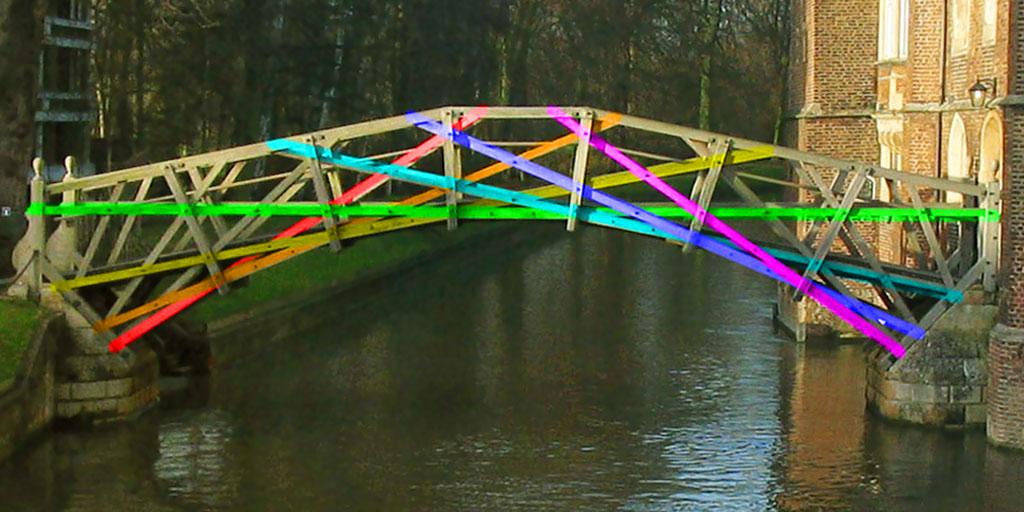
(Wikimedia Commons public domain image)
John Charlton Polkinghorne, KBE (Knight of the British Empire), FRS (Fellow of the Royal Society), was a professor of mathematical physics at the University of Cambridge until he resigned his professorial chair to study for the priesthood, becoming an ordained Anglican priest in 1982. Thereupon, he served as the president of Queens’ College, Cambridge, from 1988 until 1996.
The following notes are drawn from his 1996 Terry Lectures, delivered at Yale University and published as John Polkinghorne, Belief in God in an Age of Science (New Haven and London: Yale University Press, 1998):
“The world is not full of items stamped ‘made by God’ — the Creator is more subtle than that — but there are two locations where general hints of the divine presence might be expected to be seen most clearly. One is the vast cosmos itself, with its fifteen-billion-year history of evolving development following the big bang. The other is the ‘thinking reed’ of humanity, so insignificant in physical scale but, as Pascal said, superior to all the stars because it alone knows them and itself. The universe and the means by which that universe has come marvelously self-aware — these are the centres of our enquiry.” (1-2)
“Those who work in fundamental physics encounter a world whose large-scale structure (as described by cosmology) and small-scale process (as described by quantum theory) are alike characterised by a wonderful order that is expressible in concise and elegant mathematical terms. The distinguished theoretical physicist Paul Dirac, who was not a conventionally religious man, was once asked what was his fundamental belief. He strode to a blackboard and wrote that the laws of nature should be expressed in beautiful equations. It was a fitting affirmation by one whose fundamental discoveries had all come from his dedicated pursuit of mathematical beauty. The use of abstract mathematics as a technique of physical discovery points to a very deep fact about the nature of the universe that we inhabit, and to the remarkable conformity of our human minds to its patterning. We live in a world whose physical fabric is endowed with transparent rational beauty.
“Attempts have been made to explain away this fact. No one would deny, of course, that evolutionary necessity will have moulded our ability for thinking in ways that will ensure its adequacy for understanding the world around us, at least to the extent that is demanded by pressures for survival. Yet our surplus intellectual capacity, enabling us to comprehend the microworld of quarks and gluons and the macro world of big bang cosmology, is on such a scale that it beggars belief that this is simply a fortunate by-product of the struggle for life. Remember that Sherlock Holmes told a shocked Dr. Watson that he didn’t care whether the Earth went round the Sun or vice versa, for it had no relevance to the pursuits of his daily life.” (2-3)
Polkinghorne is not at all sympathetic to notions that mathematics is merely a rather arbitrary human invention. It works too well in such fields as physics. And, anyway,
“The sense of discovery, to which the mathematicians testify, encourages the belief that there is a realm of reality in which entities like the Mandelbrot set exist everlastingly.” (xiii)
To make his point, he tells the story of Albert Einstein’s development of the theory of general relativity through mathematical reasoning, and of his delight — perhaps the strongest emotional experience in Einstein’s life — when he found that it accounted for a discrepancy regarding the planet Mercury that, under Newtonian physics, had baffled astronomers for more than six decades. Nature, Einstein felt, “had spoken to him.” (3-4)
“There is no a priori reason why beautiful equations should prove to be the clue to understanding nature; why fundamental physics should be possible; why our minds should have such ready access to the deep structure of the universe. It is a contingent fact that this is true of us and of our world, but it does not seem sufficient simply to regard it as a happy accident. Surely it is a significant insight into the nature of reality.” (4)
“I believe that Dirac and Einstein, in making their great discoveries, were participating in an encounter with the divine.” (4)
“The ‘unreasonable effectiveness of mathematics’ in uncovering the structure of the physical world (to use Eugene Wigner’s pregnant phrase) is a hint of the presence of the Creator.” (4)
But only a hint. An indicator for those with eyes to see. Not a coercive and inescapable proof.
“I do not present this conclusion as a logical demonstration — we are in the realm of metaphysical discourse where such certainty is not available either to believer or to unbeliever — but I do present it as a coherent and intellectually satisfying understanding.” (4-5)
Dr. Polkinghorne regards “natural theology” — the attempt to discern the existence and perhaps some of the character of God from nature rather than from special revelation, as “an insightful, rather than logically demonstrative, discipline” (xi) Nevertheless, he openly states his “conviction that theism offers the ‘best explanation’ of the many-levelled character of human encounter with reality” (xii) and that “there is a Mind and a Purpose behind the history of the universe” (1). “I believe,” he says, “that the rational beauty of the cosmos indeed reflects the Mind that holds it in being.” (4)
***
I wrote a column for the Deseret News some time back in which I referred to another aspect of Dr. Polkinghorne’s thinking:
“Maybe the firing squad was on your side”



